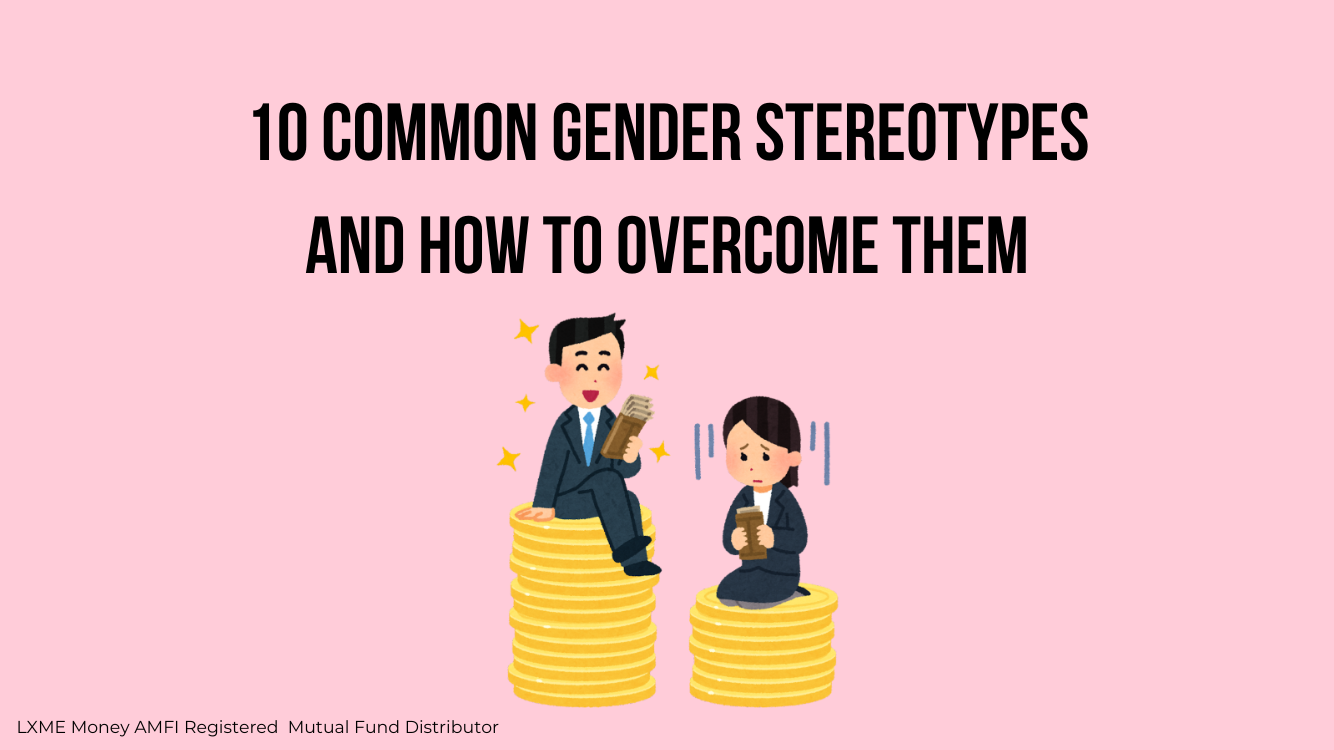Traditional stereotypes in society have shaped the expectations for men and women and are deeply rooted in culture and social norms. Men are seen as providers and decision-makers, while women are expected to be caregivers and obedient wives. As our society progresses, it is important to challenge these gender stereotypes and create an equitable world where both men and women can thrive.
Let’s explore 10 common examples of gender stereotypes and how to overcome them.
1. Men Are Better at Handling Money Than Women
Men are considered naturally better with money, while women are seen as impulsive spenders or bad at budgeting. To overcome this gender stereotype, normalize shared financial responsibility in relationships. Women are increasingly part of the workforce, and many men are stay-at-home parents. Open conversations about money should focus on collaboration, not outdated gender roles. Women can learn about personal finance and budgeting with Lxme and start investing in Lxme’s goal-based mutual fund portfolios curated by experts to grow their money.
2. Women Shouldn’t Be Too Focused on Wealth or Financial Ambition
Stereotypes in society label women who are financially ambitious as greedy or selfish, while men are praised for the same behavior. Women should feel empowered to pursue financial success without guilt. Money can provide freedom, security, and opportunities, and women should not apologize for wanting to secure their financial future. You should also read about the top 10 female entrepreneurs in India and women empowerment.
3. Women Are Less Committed to Their Careers Due to Family Obligations
There’s a belief that women are less dedicated to their careers because they have to raise children or manage family responsibilities, leading to biases in hiring, promotions, and pay. Women should be supported in balancing career and family life and men should be more involved in caregiving activities and household chores. Women are just as career-oriented as their male counterparts and there’s no denying it.
4. Women Cook, Clean, and Take Care of the House
One of the examples of gender stereotypes is that women often end up doing more housework than men. Encouraging equal participation in chores helps break the stereotype that housework is only a woman’s responsibility.
5. Women Are Bad Drivers
Stereotypes in society consider women as worse drivers than men, often leading to unfair judgment on the road. Driving skills are individual, not gender-based. Promoting safe driving and recognizing responsible drivers of all genders will help shift this mindset.
6. Women Don’t Need Equal Pay Because They Are Supported by Their Husbands
This gender stereotype implies that women don’t need to earn as much because their husbands will financially support them, dismissing the value women bring to their work. However, everyone deserves equal pay for the work that they do. Women don’t need to depend on their spouses for money and should be fairly compensated for their contributions.
7. Women Are Less Interested in Investing
It is assumed that women are less interested in investing or financial management. Men are often seen as the experts in finance, and women are excluded from these discussions. Women must take control of their finances. The Lxme app has learning modules that teach you about investing and managing money and will help you feel empowered to participate in these areas.
8. Women Spend Too Much
People think women buy too many things or waste money. It’s important to remember that both men and women have different ways of spending, and it’s not based on gender but on each individual. You can even know more about different female personality types.
9. Women Are Too Emotional
Women are usually considered overly emotional, making them less capable of making rational decisions or handling stress. Emotions don’t mean irrationality. Women, like men, can be emotional and rational at the same time. Emotional intelligence helps women navigate challenges with both empathy and logic.
10. Women are not good with Technology
Lots of women are doing amazing things in tech, proving this stereotype wrong. To change this, we should encourage women to become tech-savvy from an early age and create spaces where they can support each other. It’s about focusing on skills, not gender.
Conclusion:
These examples of gender stereotypes limit the potential of women and hold back societal progress. By acknowledging and challenging these outdated beliefs, we can create a more equal world where both men and women have the support and freedom to achieve their goals.
FAQs
How can organizations address unconscious bias related to gender in hiring practices?
Organizations can implement bias training, diverse hiring panels, and objective criteria to promote fair and equal opportunities for all genders.
What role does education play in breaking down gender stereotypes in children?
Education encourages critical thinking, challenges stereotypes, and promotes gender equality by teaching children about diverse role models and perspectives.
How can media representation influence the dismantling of gender stereotypes?
Media can challenge stereotypes by showcasing diverse, realistic portrayals of both genders, encouraging more inclusive and balanced narratives.
Further Read,












